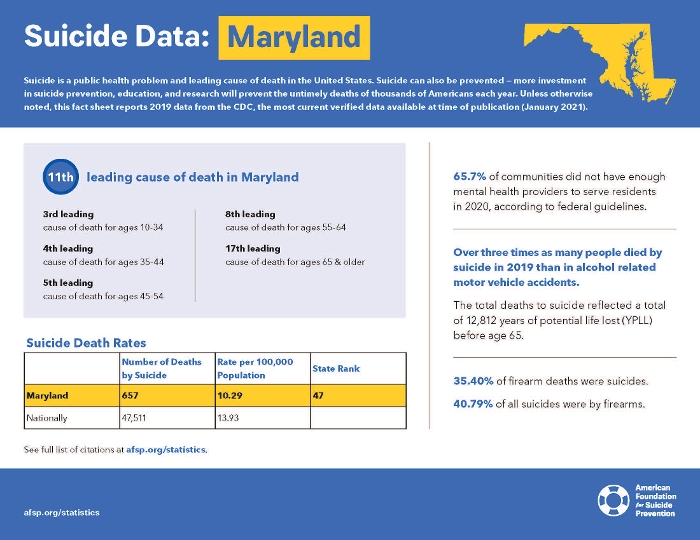There's no single cause for suicide. Suicide most often occurs when stressors exceed current coping abilities of someone suffering from a mental health condition. Depression is the most common condition associated with suicide, and it is often undiagnosed or untreated. Conditions like depression, anxiety and substance problems, especially when unaddressed, increase risk for suicide. Yet it's important to note that most people who actively manage their mental health conditions lead fulfilling lives.
Suicide Warning Signs
Something to look out for when concerned that a person may be suicidal is a change in behavior or the presence of entirely new behaviors. This is of sharpest concern if the new or changed behavior is related to a painful event, loss, or change. Most people who take their lives exhibit one or more warning signs, either through what they say or what they do.
Talk
If a person talks about:
- Being a burden to others
- Feeling trapped
- Experiencing unbearable pain
- Having no reason to live
- Killing themselves
Behavior
Specific things to look out for include:
- Increased use of alcohol or drugs
- Looking for a way to kill themselves, such as searching online for materials or means
- Acting recklessly
- Withdrawing from activities
- Isolating from family and friends
- Sleeping too much or too little
- Visiting or calling people to say goodbye
- Giving away prized possessions
- Aggression
Mood
People who are considering suicide often display one or more of the following moods:
- Depression
- Loss of interest
- Rage
- Irritability
- Humiliation
- Anxiety
Suicide Risk Factors Risk factors are characteristics or conditions that increase the chance that a person may try to take their life.
Health Factors
- Mental health conditions
- Depression
- Bipolar (manic-depressive) disorder
- Schizophrenia
- Borderline or antisocial personality disorder
- Conduct disorder
- Psychotic disorders, or psychotic symptoms in the context of any disorder
- Anxiety disorders
- Substance abuse disorders
- Serious or chronic health condition and/or pain
Environmental Factors
- Stressful life events which may include a death, divorce, or job loss
- Prolonged stress factors which may include harassment, bullying, relationship problems, and unemployment
- Access to lethal means including firearms and drugs
- Exposure to another person's suicide, or to graphic or sensationalized accounts of suicide
Historical Factors
- Previous suicide attempts
- Family history of suicide

